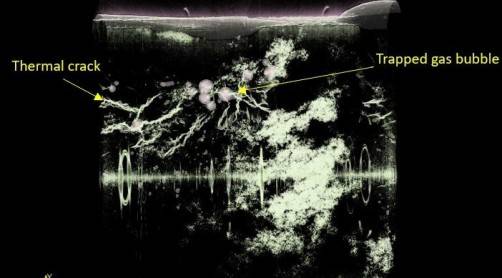Researchers have developed a way to consistently produce a special type of stainless steel known as 17-4 PH using additive manufacturing, or 3D printing, which they claim is one of the Strongest Stainless Steels . Using 3D printing for steel and other alloys has long been a challenge. This is due to the rapid change in temperatures that occur in these materials after they are heated by the lasers in 3D printers. These rapid changes alter the structural arrangement of the atoms in the material, making it more difficult to achieve the toughness needed for 17-4 PH steel. Using bright X-ray beams, scientists observed those fast changes in real time and altered the chemical composition to compensate for them, resulting in a more durable final product.
Table of Contents
The Impact of 3D Printing Strongest Stainless Steels
The stainless steel called 17-4 PH is known for its strength and resistance to corrosion. It is used in industrial machinery, marine vessels, aircraft, and medical devices. The new findings could help producers of 17-4 PH parts use 3D printing to cut costs and increase manufacturing flexibility. The approach used to examine the material in this study may also set the stage for a better understanding of how to print other types of materials and improve their properties and performance.
Summary
3D printing, also known as additive manufacturing, is a direct and integral construction of a three-dimensional object from a digital model, layer by layer. Metal alloys are particularly tricky to print in this manner due to the rapid temperature changes that occur during the process. Using 3D printing to reproduce a durable material such as 17-4 PH stainless steel requires the ability to closely monitor these rapid changes as they happen and make modifications to the material’s crystal structure.
Monitoring 3D printing of 17-4 PH stainless steel was made possible by the bright X-ray beams at the Advanced Photon Source (APS), a Department of Energy Office of Science light source user facility at Argonne National Laboratory. The researchers used high-energy X-ray diffraction to capture images every few milliseconds as the material was heated and cooled. Using these images, the team mapped the correlation between process parameter changes and modifications to the crystal structure, then used that analysis to guide alloy development for optimizing the printing process. They then used small-angle X-ray scattering at the APS to characterize tiny structural anomalies called nanoprecipitates that strongly influence the final strength of a printed stainless-steel part. The method developed will help enable manufacturers to consistently and cost efficiently produce one of the toughest materials in the world.
Funding
This work was funded by the National Science Foundation (NSF) and the University of Wisconsin-Madison Startup Fund and used resources at the UW-Madison Wisconsin Centers for Nanoscale Technology partially supported by NSF through the University of Wisconsin Materials Research Science and Engineering Center. The research also used resources at the Advanced Photon Source, a Department of Energy Office of Science user facility.


